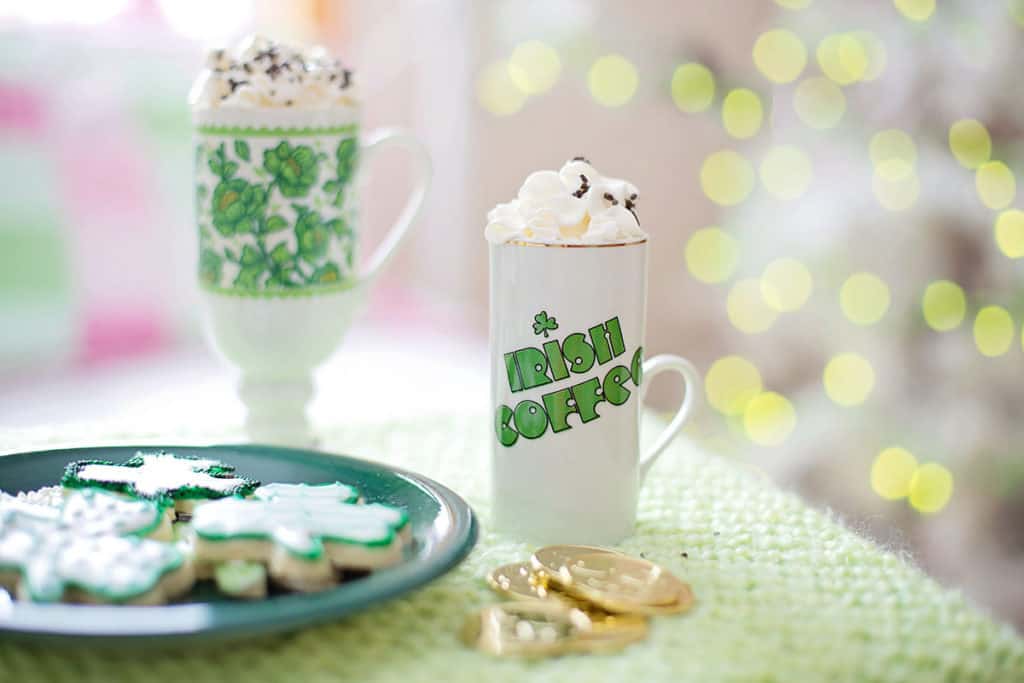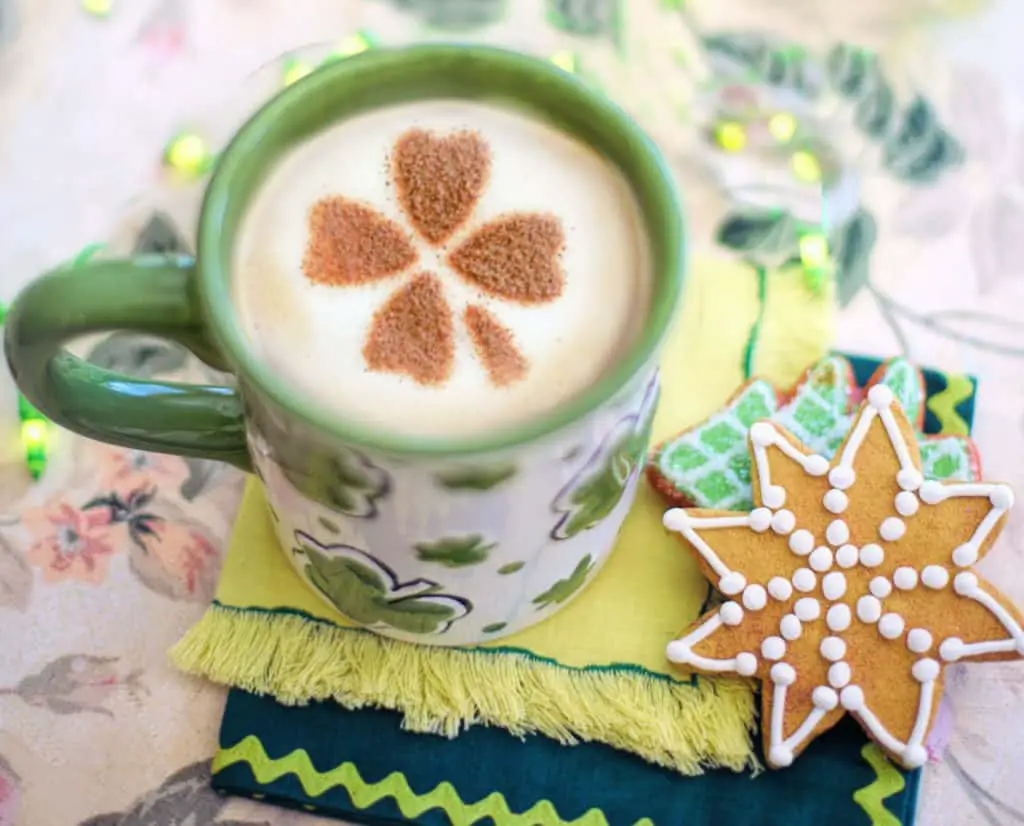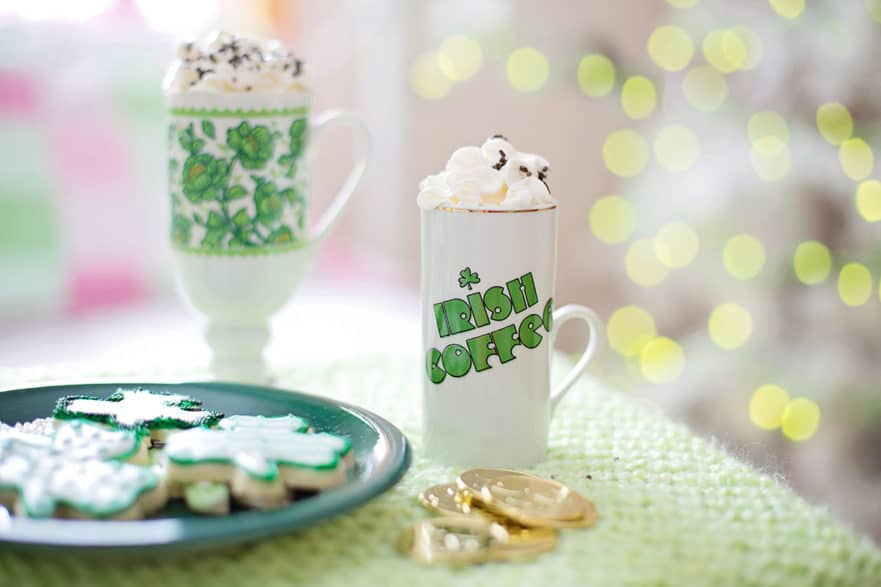
Irish Coffee has always been a crowd-pleasing drink that warms the soul on any evening. Combining hot coffee, Irish whiskey, brown sugar, and a crown of whipped cream, this classic cocktail hails from Ireland and has won hearts worldwide.
Its rich history, tied to a small Irish village, adds charm to every sip. Best of all, it’s simple to make at home. Let’s explore the origins of Irish Coffee, its original recipe, how it crossed the Atlantic, and why it remains a beloved staple in pubs and cafés.
The Birth of Irish Coffee in Foynes, Ireland
Irish Coffee was born in 1943 at the Foynes Flying Boat Terminal in County Limerick, Ireland, a bustling hub for transatlantic seaplane travel in the 1930s and 1940s. Pan American World Airways operated massive flying boats—seaplanes that carried passengers from New York to Ireland. Unlike modern jets, these planes flew low, lacked pressurization, and were vulnerable to weather, often forcing delays or returns.
On a stormy October night in 1943, a flying boat left Foynes but turned back due to rough conditions. The terminal staff, alerted via Morse code, scrambled to comfort the cold, weary passengers. Chef Joe Sheridan, known for his hospitality, decided to spike their coffee with Irish whiskey to warm them up.
He sweetened it with sugar, topped it with cream, and served it in clear glasses to showcase the layers of dark coffee and white cream. When a passenger asked if it was Brazilian coffee, Sheridan quipped, “No, it’s Irish Coffee!”—and a legend was born.
The Foynes Flying Boat and Maritime Museum, home to the Irish Coffee Centre, preserves this story, noting that celebrities like John F. Kennedy, Bob Hope, and Marilyn Monroe passed through Foynes, sipping Sheridan’s creation. The drink’s eye-catching presentation and warming effect made it a hit, especially during World War II when entertainers and dignitaries frequented the terminal.
The Original Irish Coffee Recipe
Joe Sheridan’s Irish Coffee is deceptively simple, relying on quality ingredients and precise layering. His poetic description captures its essence:
- Cream: Rich as an Irish brogue
- Coffee: Strong as a friendly hand
- Sugar: Sweet as the tongue of a rogue
- Whiskey: Smooth as the wit of the land
Here’s Sheridan’s official recipe, as documented by the Foynes Museum:
| Ingredient | Quantity | Preparation |
|---|---|---|
| Coffee | 4 oz | Freshly brewed, hot |
| Irish Whiskey | 1.5 oz | Jameson or Bushmills recommended |
| Brown Sugar | 2 tsp | Dissolved in coffee |
| Heavy Cream | 1 oz | Lightly whipped, floated on top |
Steps:
- Warm a 6-ounce heatproof glass with hot water, then empty it.
- Pour in freshly brewed coffee (medium roast works best).
- Stir in brown sugar until fully dissolved.
- Add Irish whiskey and mix gently.
- Float lightly whipped cream on top by pouring it over the back of a spoon.
The glass is key—it showcases the contrast between the dark coffee and white cream, a visual signature Sheridan perfected. Unlike modern variations with syrups or liqueurs, the original recipe keeps it straightforward, balancing warmth, sweetness, and a whiskey kick.
How Irish Coffee Crossed the Atlantic
Irish Coffee reached America thanks to Stanton Delaplane, a San Francisco Chronicle journalist who tried it at Foynes in the early 1950s. Enchanted, he brought the idea to the Buena Vista Café in San Francisco, where he and bartender Jack Koeppler set out to recreate it. They nailed the coffee and whiskey but struggled with the cream, which sank instead of floating.
After countless experiments—Delaplane nearly collapsed from overindulgence, per a 2006 SF Gate article—San Francisco mayor and dairy farmer George Christopher suggested aging the cream for 48 hours before whipping. This gave it the right density to float, perfecting the recipe.
By 1952, the Buena Vista Café made Irish Coffee its signature, serving up to 2,000 glasses daily at its peak. Delaplane’s columns spread the word, and print ads in the 1950s fueled its rise in San Francisco. The drink hit New York and the East Coast later, becoming a pub staple by the 1960s.
Today, the Buena Vista and Foynes’ Shannon Airport (which replaced the terminal in 1947) remain pilgrimage sites for Irish Coffee fans, each claiming authenticity.
Why Irish Coffee Endures

Irish Coffee’s appeal lies in its simplicity and versatility. It’s a cozy nightcap, a festive treat for St. Patrick’s Day, or a dessert drink at restaurants, from Irish pubs to global eateries.
Its balance of strong coffee, smooth whiskey, and sweet cream appeals across cultures, unlike overly complex cocktails. The drink’s story—born from a chef’s kindness in a storm—adds a romantic allure.
Modern variations exist, like adding Baileys or flavored syrups, but purists stick to Sheridan’s recipe. Quality matters: fresh coffee, good whiskey (Jameson or Bushmills are favorites), and real cream elevate the experience. Unlike sugary coffee drinks, Irish Coffee lets the coffee shine, making it a favorite for coffee lovers.
Is Irish Coffee Truly Irish?
Does “Irish Coffee” truly come from Ireland, or is it another dish with a misleading name, like General Tso’s chicken (Taiwanese-American) or Caesar salad (invented in Mexico by an Italian)? Irish Coffee is unequivocally Irish, born in Foynes and crafted by Joe Sheridan. However, its global spread and tweaks (e.g., America’s thicker cream) have made it a shared cultural icon.
Compare this to other misnamed foods:
- Chicken Tikka Masala: Invented in Glasgow, not India.
- German Chocolate Cake: Named for American Sam German, not Germany.
- Apple Pie: Traced to medieval Europe, not America, despite the “as American as apple pie” saying.
Irish Coffee’s clear Irish roots, tied to a specific time and place, set it apart. Its name honors its origin, even as it’s adapted worldwide.
Tips for Making Irish Coffee at Home
- Use Fresh Coffee: Brew a medium roast within 24 hours for best flavor. Avoid instant coffee—it lacks depth.
- Whip Cream Lightly: Whisk heavy cream until it thickens but still pours. Over-whipped cream won’t float.
- Warm the Glass: A preheated glass keeps the drink hot, enhancing the experience.
- Dissolve Sugar Fully: Stir brown sugar (not white, for richer flavor) until no grains remain to avoid grit.
- Choose Quality Whiskey: A smooth Irish whiskey like Jameson ensures balance without overpowering the coffee.
Final Thoughts
Irish Coffee is more than a drink—it’s a slice of history, born from a chef’s ingenuity in a stormy Irish village. Its blend of coffee, whiskey, sugar, and cream offers warmth and comfort, whether you’re in a Dublin pub or a San Francisco café. Easy to make yet endlessly impressive, it’s a timeless classic that invites storytelling. Next time you sip one, raise a glass to Joe Sheridan and the Foynes passengers who first tasted this Irish gem.

